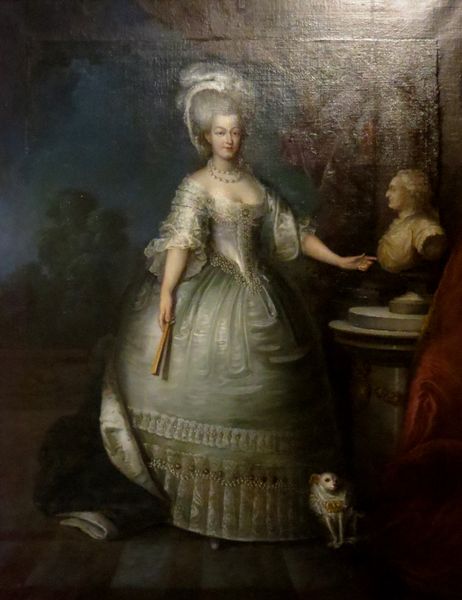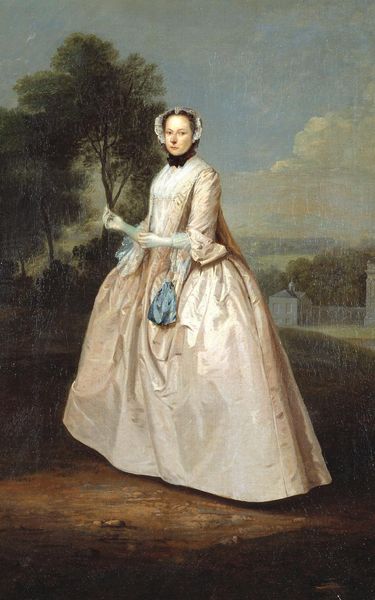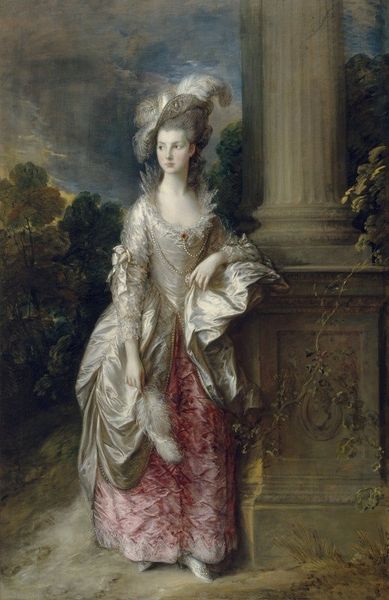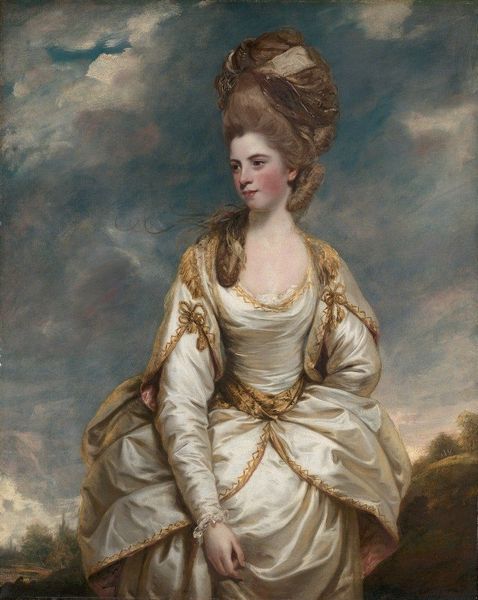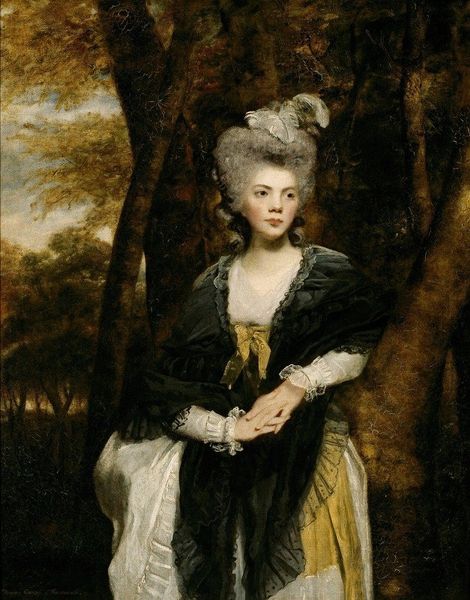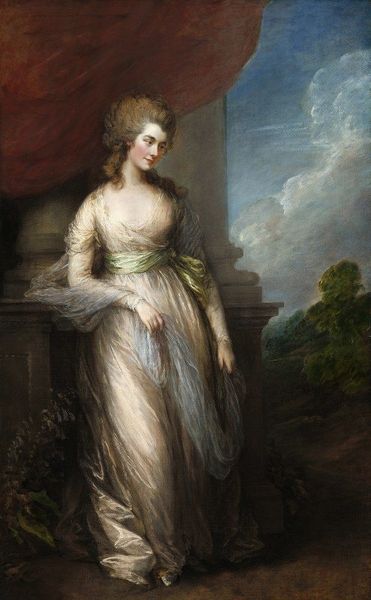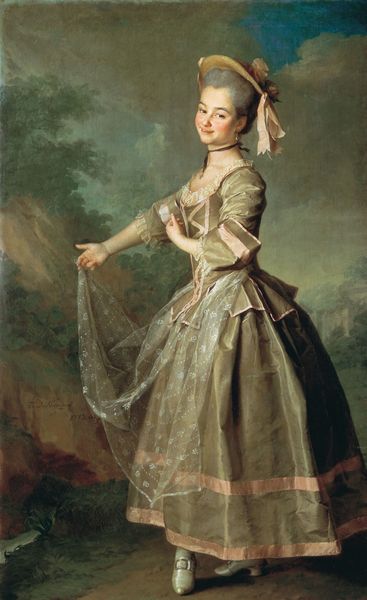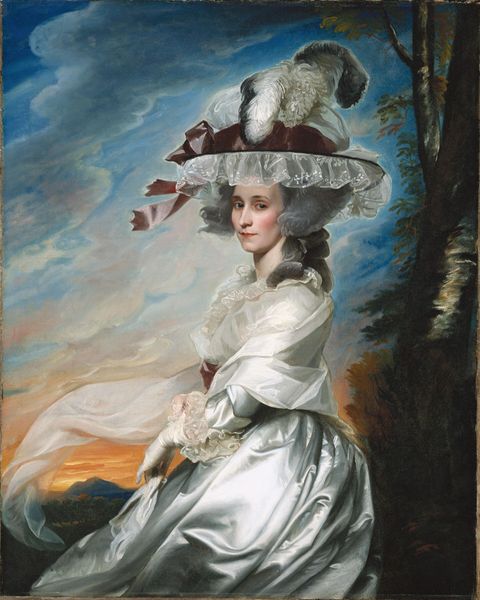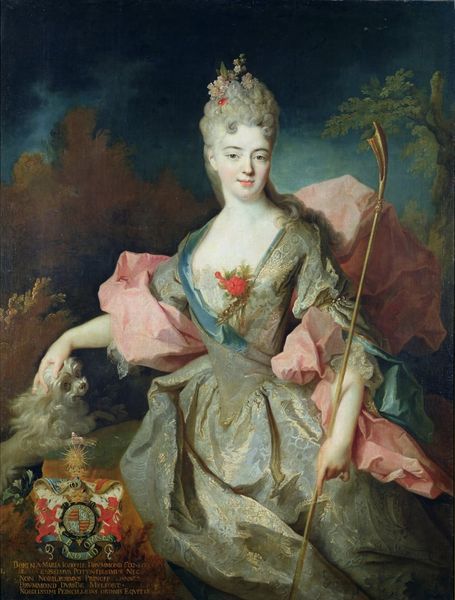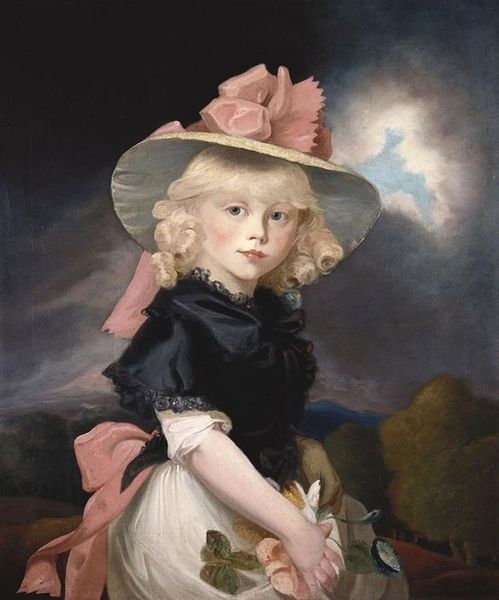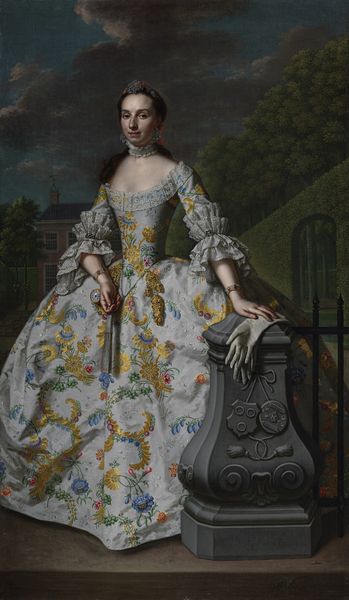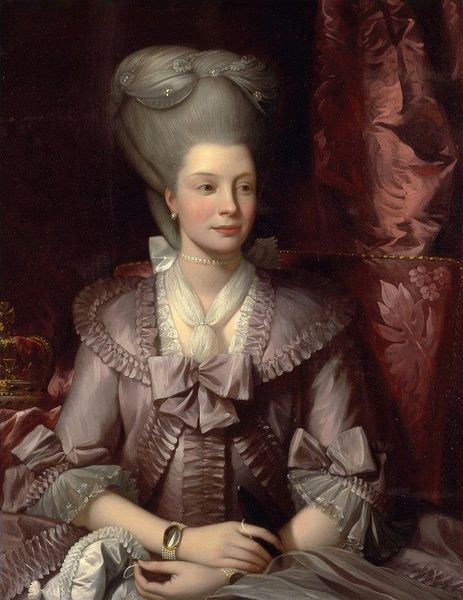
Copyright: Public Domain: Artvee
Curator: Let’s discuss "The Marquesa de Pontejos," painted around 1786 by Francisco de Goya. It’s an oil on canvas, showcasing a noblewoman with a whimsical style against a blurred verdant backdrop. What's your initial take? Editor: There's a distinct theatricality to it. All that material – lace, ribbons, and that impossibly voluminous skirt, probably underpinned with whalebone, signals conspicuous consumption. The means of getting something that large looking so light seems incredible. Curator: Indeed! This portrait is incredibly revealing, reflecting the fashion and societal expectations of aristocratic women during the late 18th century. She's simultaneously conforming to standards of beauty and subtly performing power. Note how Goya captures the textures of wealth but mutes the usual color palette, avoiding gaudiness. This approach sets this portrait apart from those made by other painters for a similar social standing. Editor: Absolutely, and focusing on the materials involved gives insight into the craftspeople supporting this lifestyle. What kind of labour went into weaving, sewing, and assembling the outfit, from the silkworms to the tailor, we ought to wonder. The very fabric, even the dye used, tells a complex economic story. The labour implied by this portrait is remarkable. Curator: Certainly, labor is always a hidden language of luxury! We should also acknowledge how the backdrop subtly gestures toward idealized nature. It presents the marquesa as both an individual and an idealized representative of the Spanish elite. What meanings were constructed and imposed? What statements does this artwork offer for later consideration? Editor: Perhaps it's Goya using materiality to remind us that beauty has an exploitative cost, a sort of built-in tension that makes the painting subtly unnerving, which would mark its break with past traditions, right? It challenges any romantic, carefree notions of aristocracy. Curator: Precisely! Goya uses beauty to ask viewers to think critically about the relationship between power and image. Considering this artwork in a gallery context prompts important reflections on art and society, and in the work's relation to those still marginalized within existing power structures. Editor: And looking closely at its materials allows us to appreciate the skill and toil required for such displays, but also exposes the socio-economic layers beneath that aristocratic polish. It reminds me to be critical about visual delight, honestly!
Comments
No comments
Be the first to comment and join the conversation on the ultimate creative platform.
